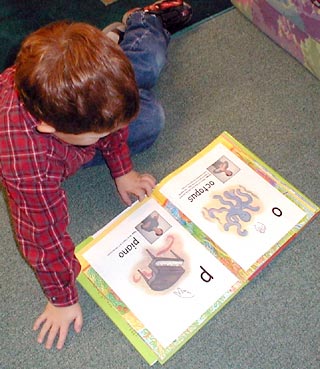
A child's understanding of the alphabetic principle can be assessed very early, even before the child can accurately read or write simple words. The most direct approach is to ask the child to write words that you dictate - even if the child can not write the words accurately, her understanding of the alphabetic principle is revealed by whether or not she writes one symbol for each sound in the word. Young children often represent a whole word with a single symbol (Sometimes the symbol the child chooses is the first letter of the word, so a child might represent the word DOG with the letter D). This reflects their view that a word only exists as a representation of an object. Children who have an understanding of the alphabetic principle, however, will attempt to encode all of the sounds they hear in the word, although they may not use the right letters - in fact, they may not use letters at all. The child who has internalized the alphabetic principle may write the word BALL with three symbols, and ironically may represent the word BOX with four symbols (e.g. BOKS).
Similarly, children's knowledge of the alphabetic principle can be tested in other ways. Children can be presented with two words (written) - one long word and one short word. The teacher asks the children to pick the word they think she is saying (and she would say either a very long word or a very short word; e.g. HIP or HIPPOPOTOMOUS. The words can get closer in length as the child learns the object of the assessment.). Even if the children can not read yet, an understanding of the alphabetic principle will allow them to pick the right word.



0 comments:
Post a Comment